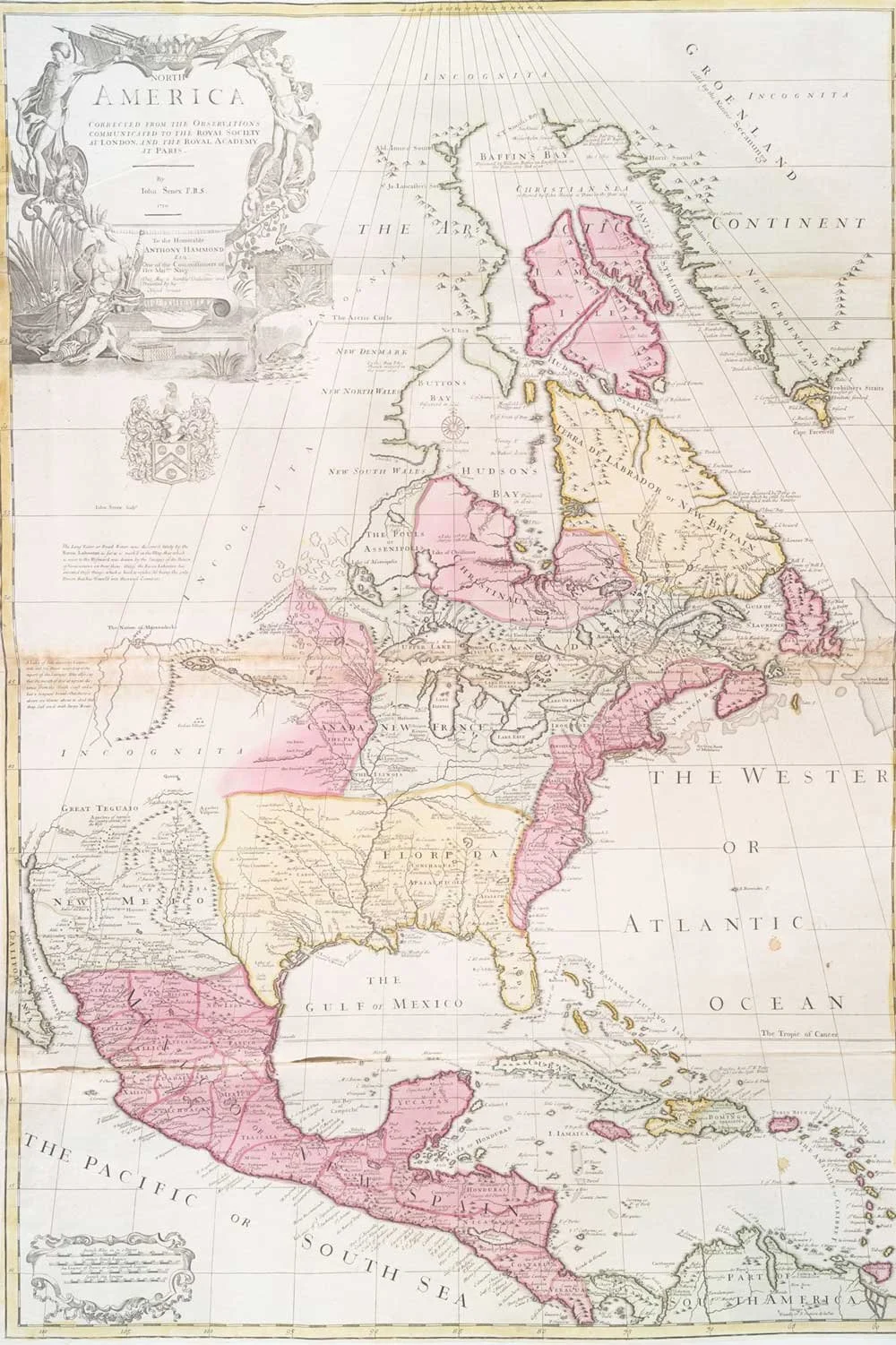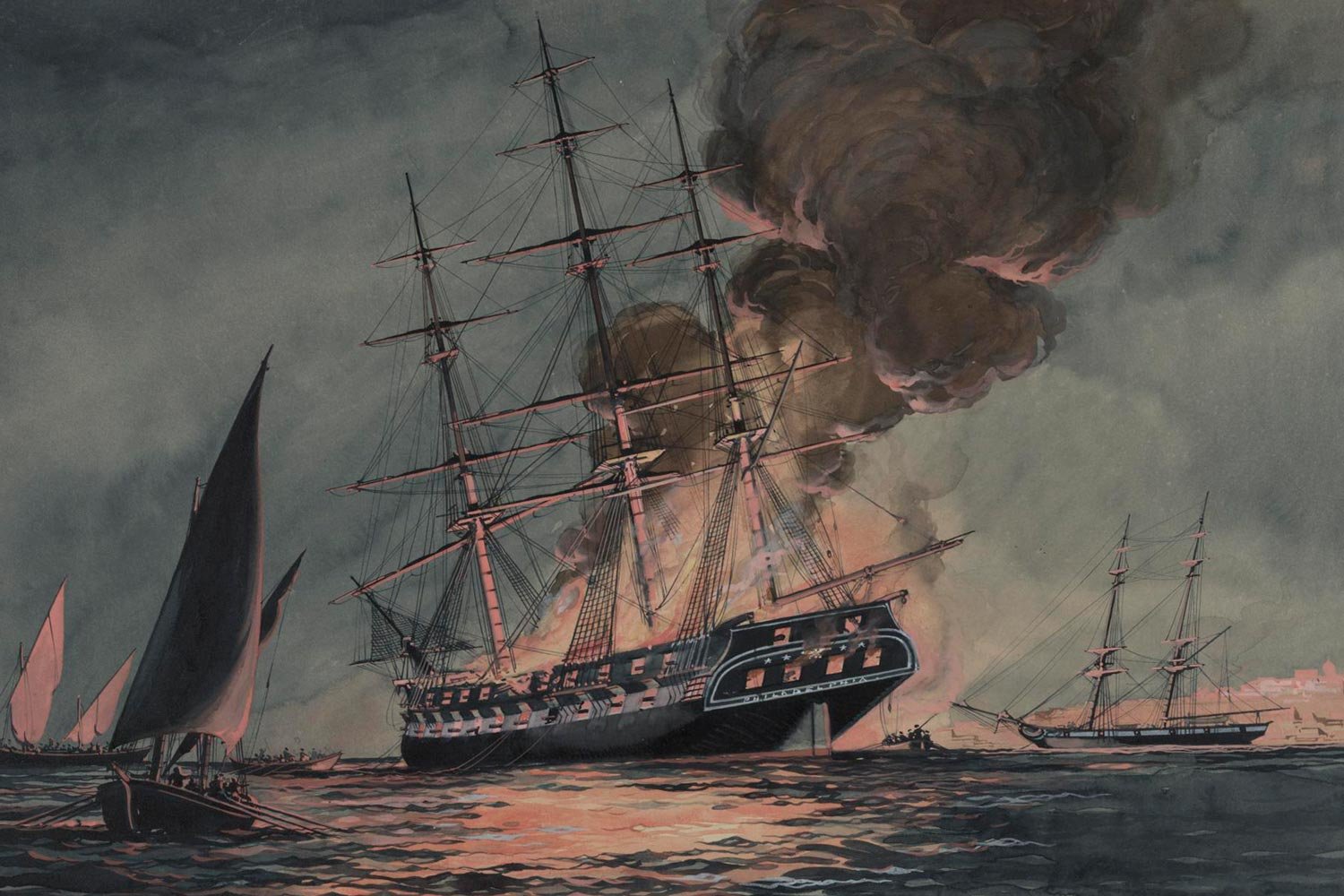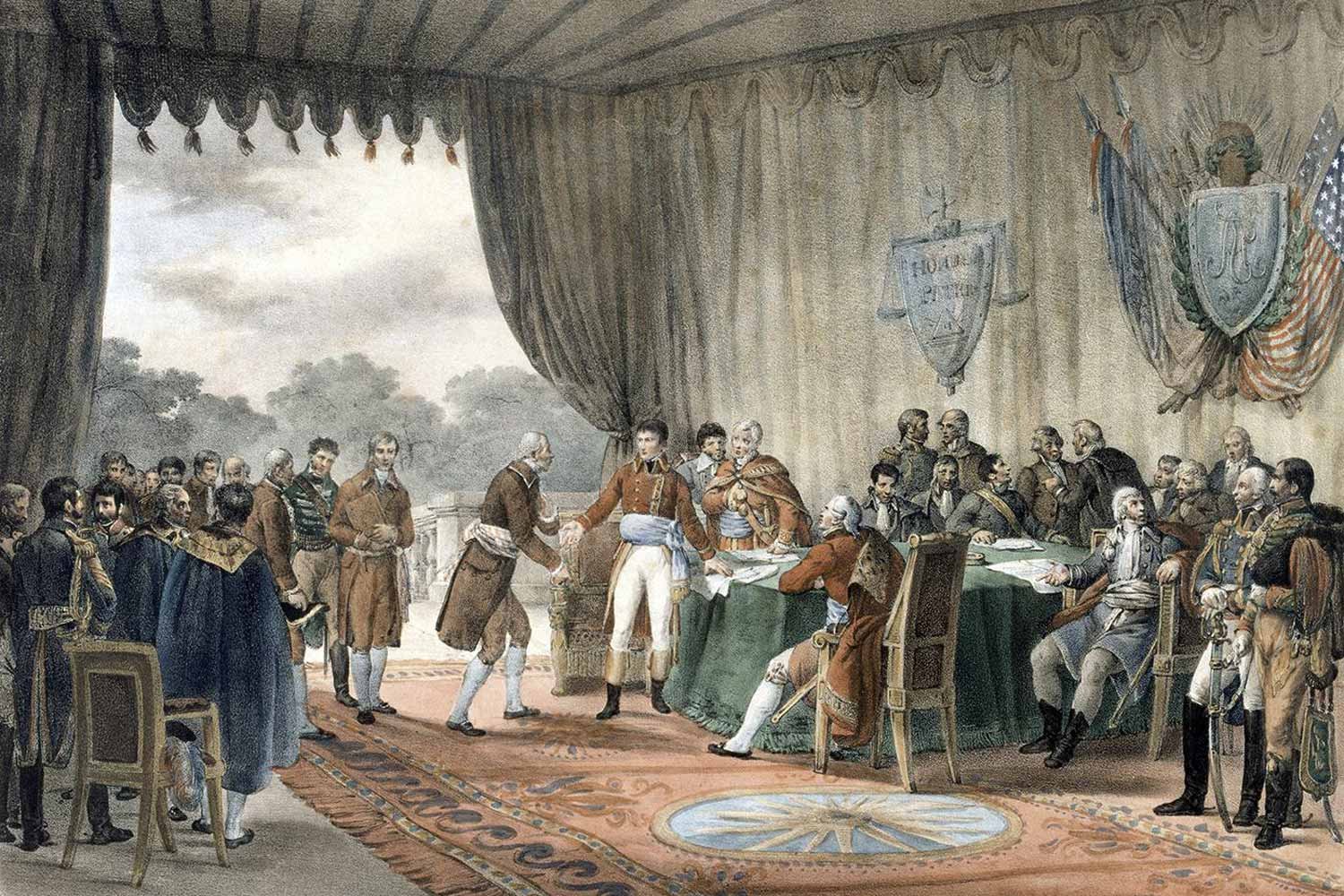European Nations Vie for North America
To early generations of British Americans, largely confined to the Atlantic seaboard, the area beyond the Appalachian Mountains seemed mysterious, vast, and relatively unpopulated. It was all that, but it also had a long history of exploration by other European nations and within its boundaries lay the future of America.
The first Europeans to reach the New World and explore the interior of North America were the Spanish in the early-1500s who came for “gold, glory, and God,” but not so much with an eye to establishing settlements. Intrepid adventurers like Hernando de Soto traversed much of the southeast from present-day Florida to North Carolina and as far west as the Mississippi River.
For roughly two centuries, Spain dabbled and explored and built short-lived forts in the southeastern part of the continent. But the empire they created, called New Spain, never really gained a permanent foothold except in modern day Florida. It was here they established forts at locations with relatively safe harbors, most notably in St. Augustine in 1565 and Pensacola in 1698.
France was the other European nation that made a major effort to establish a colonial empire in North America beginning with Samuel de Champlain in the early 1600s, and they called their holdings New France. At the time, France was an absolute monarchy and both King and country were devoted to the Catholic Church. This matters because it shaped how the French established themselves in the new world, and their method of settlement differed greatly from that of the English.
Because the King of France wielded complete authority over his dominions, there was no tradition of representative assemblies in France like Parliament in England. As a result, authority in New France resided solely in the appointed royal officials and there were no local assemblies around which the residents could coalesce and become united. In essence, while English colonists were governed, the French were ruled.
Additionally, while many early English settlers sought religious freedom in North America, the French sought religious conformity, and hoped to convert the “heathen savages” and save their souls. Consequently, many of the earliest Frenchmen who explored the interior of the continent were Jesuit priests such as Jacques Marquette looking for converts to the “one true faith.”
The Jesuits, or Society of Jesus, were formed in 1540 by Ignatius of Loyola with the mission of carrying the word of God to all corners of the earth, regardless of the hardship. As a result, Jesuits are sometimes called the “soldiers of God” for their tendency to travel into desolate regions to propagate the faith. As these zealous missionaries sent word back to France regarding the seemingly boundless resources of North America, soldiers and traders soon followed in the priest’s wake.
“North America.” The New York Public Library.
To better save the natives’ souls, the Jesuits lived amongst them and when traders arrived to exploit the fabulously rich fur trade, they did as well. In many cases, the fur traders took Indian wives and became “more native than the natives.” This living arrangement led to a closeness and a trust between the Native Americans and the French that the English never achieved and was the primary reason why the Indians allied with the French when war with England broke out in 1754.
As time went on, Frenchmen made greater inroads into the interior of the continent, especially the Ohio Country and Mississippi Valley. Father Marquette and Louis Joliet, a former Jesuit, explored the upper reaches of the Mississippi and descended the river to the mouth of the Arkansas River in 1673.
Nine years later, in 1682, Rene-Robert Cavelier, Sieur de La Salle, another former Jesuit, canoed from the Illinois River down the Mississippi to the Gulf of Mexico, claiming the land for France and naming it Louisiana after King Louis XIV. Although LaSalle reached the Gulf, he failed to find the true mouth of the Mississippi. That honor would fall to Pierre Le Moyne d’Iberville in 1699, the man generally credited with establishing the colony of Louisiana.
With these new lands in the deep south and their possessions along the lower St. Lawrence River in the north, the need arose for the French to connect the two disparate regions. To accomplish this goal, the French erected a chain of posts at all key points along the water highway stretching from the Great Lakes to the Gulf.
These included Niagara that opened travel to the western Great Lakes, Detroit which controlled access to Lake Huron, and Michilimackinac that guarded the mouth of Lake Michigan. There were posts at Green Bay and St. Joseph protecting water routes to the Mississippi and others that served the same purpose on the Wabash and the Maumee Rivers. On the Mississippi itself, outposts sprang up at Kaskaskia and Cahokia in Illinois Country and further down the river at Natchez.
By the 1740s, these forts were established and, although each was defended by less than one hundred soldiers, the north-south French connection was complete. King Louis and his ministers now turned their eyes to the Ohio River Valley and the junction of the Allegany and Monongahela Rivers where they formed the spectacular Ohio River.
Next week, we will discuss the battle for North America. Until next time, may your motto be “Ducit Amor Patriae,” love of country leads me.












Commodore Edward Preble assembled his considerable American fleet just outside Tripoli harbor in August 1804, determined to punish the city and its corsairs, and force Yusuf Karamanli, the Dey of Tripoli, to sue for peace.